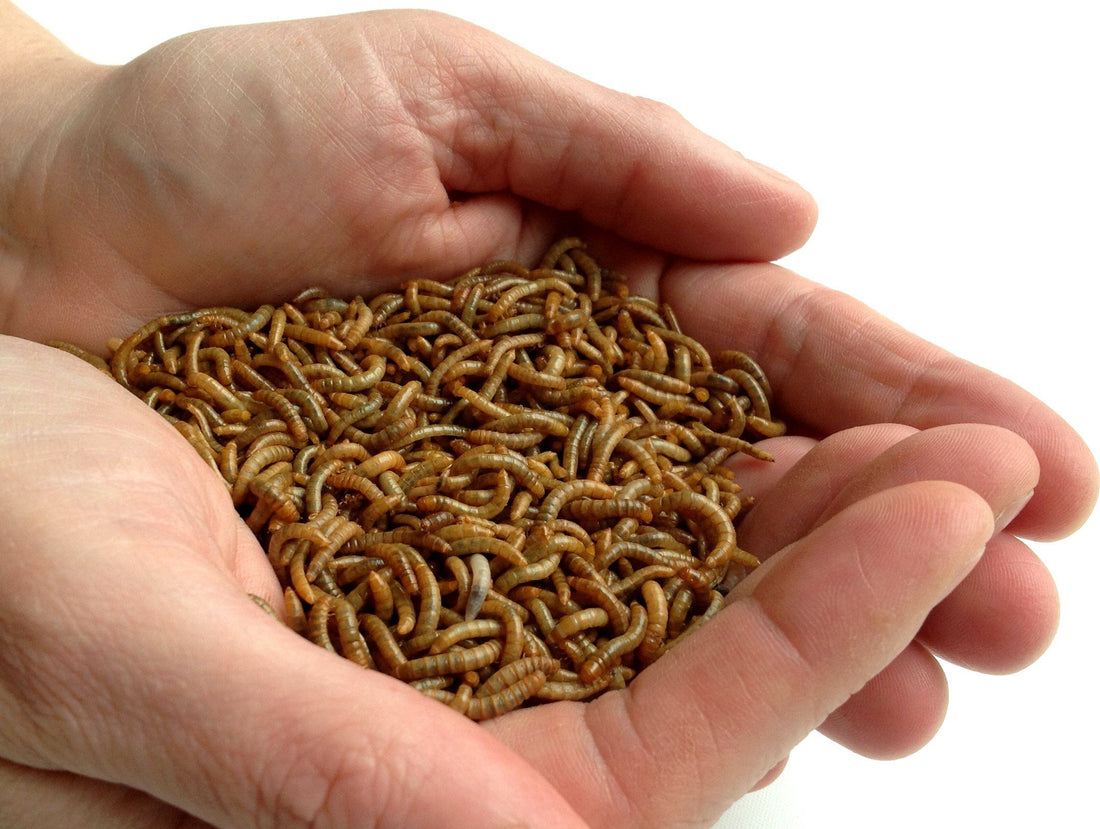What are Mealworms?
Mealworms are the larvae of the Tenebrio molitor darkling beetle. They look very similar to superworms, which are also a type of darkling beetle, but in fact they are two entirely different species!
Mealworms are a popular feeder insect for a variety of insectivorous and omnivorous reptiles, amphibians, invertebrates, and other pets.
How to House Your Mealworms
Mealworms can usually be housed in the same plastic tub that you buy them in. However, if you want to keep them for more than just a couple weeks, then you will need a more permanent form of housing. You will likely do just fine with a 4" x 6" cricket keeper or similar, but if you need to keep a lot of them, you will need something larger, like a 5 or even 10 gallon tank.
There is little danger of the worms themselves escaping, as they prefer to stay buried, but if you have any turn into beetles, you will want a ventilated lid to keep them from roaming about your house.
How to Feed Your Mealworms
For mealworms, their bedding doubles as their food. Oatmeal and oat bran are popular choices, and your mealworm tub should have at least a couple inches of it for the mealworms to burrow in and eat. However, what you feed to your mealworms is eventually what you feed to your pet, so grain is not enough. It's best to add fresh vegetables to the tub for an additional source of vitamins.
As the worms eat through their bedding, they will produce droppings (called "frass") and shed skins. Over time, the frass and shed gradually replace the bedding. Check the composition of the bedding on a regular basis, and when you notice levels getting low or significant buildup of waste, add more bedding. It's a good idea to do a total replacement every so often.
Keeping Your Mealworms Hydrated
Another reason to provide fresh vegetables to your mealworms is for hydration. Aside from vitamins, vegetables are full of water, and provide a way for your mealworms to get water without potentially drowning in a water dish or making the bedding soggy. Use nutritious vegetables like carrots, broccoli, sweet potato, and squash, and remove them when they've dried out or start to mold.











